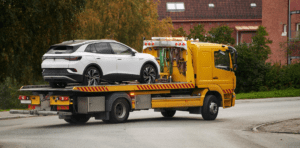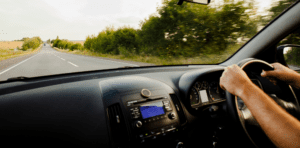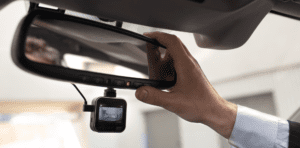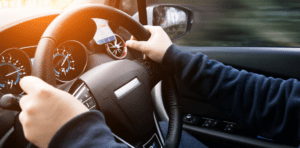Compare cheap car insurance
✔ Compare cheap car insurance quotes
✔ Over 110 insurance providers
✔ Get a quote in minutes
✔ Save up to £504*
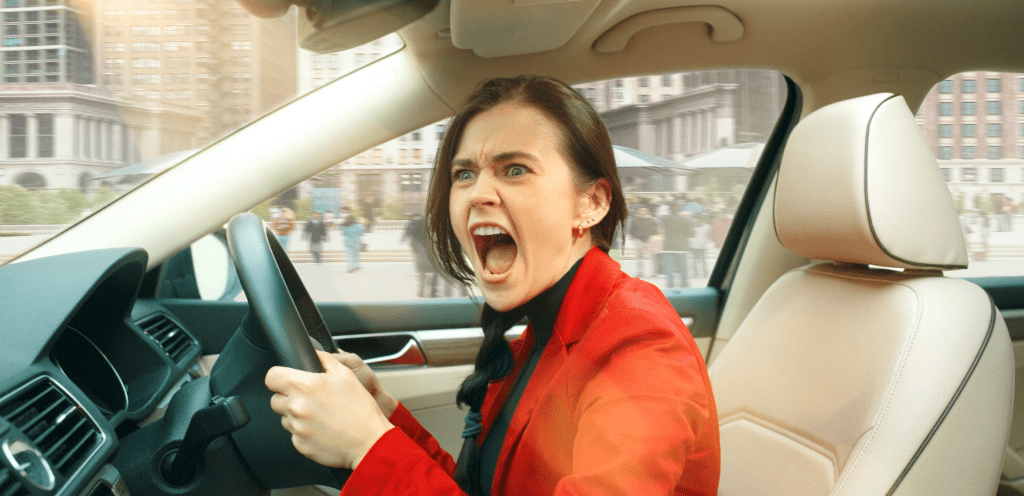

Discover the key to road rage prevention with our essential guide tailored for drivers. From effective strategies to curbing road rage to vital insights on insurance cover in road rage-related accidents, we have you covered.
- What are the signs of road rage?
- Why is road rage dangerous?
- Can I claim for road rage accidents on my car insurance?
- Is road rage illegal?
- How to deal with road rage
- Should I report aggressive drivers?
- What should I do if I’m involved in an accident involving an aggressive driver?
- What are my rights if my road rage caused an incident?
- Road rage and the new Highway Code changes
What if you find yourself at fault as the aggressive driver? We provide the answers you seek.
Whether you’re grappling with frustration behind the wheel or concerned about the conduct of other drivers, our comprehensive guide offers solutions and expert advice to put your mind at ease.
What are the signs of road rage?
Road rage is a prevalent issue affecting numerous drivers. Surprisingly, 62% of drivers have experienced road rage, with 30% having encountered direct confrontations with fellow drivers.
To identify signs of road rage, keep an eye out for the following common behaviours:
- Speeding: Excessive and aggressive acceleration beyond the limits.
- Sudden Braking: Abruptly halting or decelerating, often without a valid reason.
- Tailgating: Following too closely or failing to maintain a safe distance from other vehicles.
- Impatient Driving: Displaying restlessness and frustration, such as frequent lane changes or aggressive overtaking.
- Shouting and Gesturing: Vocal outbursts, offensive language, or aggressive hand movements towards other drivers.
- Horn Honking and Headlight Flashing: Repeatedly sounding the horn or flashing headlights as a form of aggression.
If you find yourself sharing the road with an individual exhibiting any of these behaviours, it is crucial to remain calm and continue driving normally. While it may cause some concern, consider pulling over at a safe location or altering your route to avoid any potential confrontation.
Similarly, if you feel your own temper escalating and your driving becoming reckless, find a secure spot to pull over and regain composure.
By familiarising yourself with the signs of road rage, you can adeptly identify them in other drivers or even within yourself, taking proactive measures to prevent the situation from intensifying.
What are the most common causes of road rage?
Research has shed light on the most prevalent triggers of road rage. By understanding these causes, we can take proactive steps to prevent the escalation of such incidents. Here are the top contributing factors identified:
Tailgating (35%): The act of driving too closely to the vehicle ahead can create a sense of frustration and anxiety, potentially leading to aggressive responses.
Slow driving (29%): Experiencing a driver who maintains a considerably low speed, impeding the flow of traffic, can ignite impatience and irritability among fellow drivers.
Witnessing a driver talking on the phone (29%): Observing another driver engaging in distracted behaviour, particularly talking on the phone while driving, can trigger feelings of anger and resentment.
Lack of indication (29%): Failing to use turn signals or indicators when changing lanes or making turns can be perceived as disrespectful and dangerous, fuelling frustration among other drivers.
It is crucial to recognise these common causes as they can help drivers become more self-aware and empathetic on the road.
By understanding the factors that contribute to road rage, we can work towards creating a safer and more harmonious driving environment for everyone.
How much can you save on your car insurance?
Why is road rage dangerous?
Road rage goes beyond mere frustration on the road and can have far-reaching and perilous consequences. While some incidents may end with a brief exchange of words, the potential dangers associated with road rage include:
Accidents: Allowing anger or fixating on another driver’s road rage diverts attention from the road, increasing the likelihood of making mistakes and causing accidents. Such moments of distraction can have serious repercussions.
Physical Confrontation: In extreme cases, road rage can escalate to physical altercations. It is not uncommon for drivers to exit their vehicles and engage in aggressive confrontations, putting personal safety at risk.

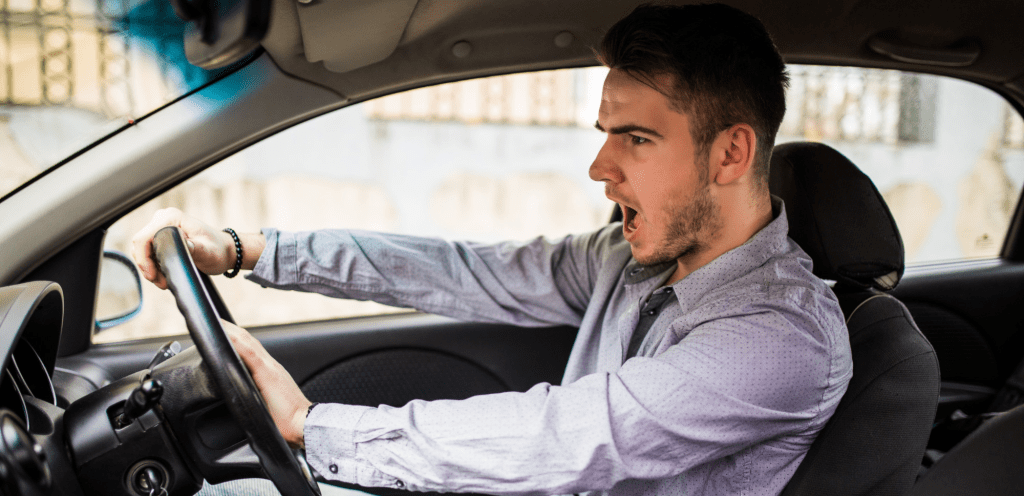
Health Implications: The stress induced by road rage can lead to elevated blood pressure levels. Frequent episodes of anger and frustration while driving can contribute to long-term high blood pressure (hypertension), which in turn may lead to health complications such as a weakened immune system, heart disease, stroke, aneurysm, and even dementia.
Serious Crimes like Carjacking: While rare, severe instances of road rage have been known to escalate to more serious criminal acts such as carjacking. These occurrences highlight the potential dangers of unchecked anger on the road.
What is carjacking?
Carjacking stands as a grave and treacherous crime that involves the forcible theft of a vehicle while the driver is still present. This highly dangerous act can, in severe instances, be a tragic culmination of extreme road rage incidents.
Carjacking occurs when an individual or a group of individuals employ force or intimidation to seize control of a vehicle, often leaving the driver in a vulnerable and distressing situation. This crime is marked by its violent nature, posing significant risks to the victim’s safety and well-being.
While carjacking incidents stemming from road rage are relatively rare, they serve as stark reminders of the potential consequences of unchecked aggression on the road.
Such extreme acts underscore the need for drivers to exercise caution, employ conflict resolution skills, and prioritise personal safety when faced with escalating road rage situations.
By remaining vigilant and implementing preventive measures, drivers can contribute to a safer driving environment, reducing the likelihood of falling victim to the devastating crime of carjacking.
How much can you save on your car insurance?
Can I claim for road rage accidents on my car insurance?
The cover for road rage accidents on your car insurance hinges on several factors. If you find yourself as the victim of an accident caused by another motorist’s reckless or aggressive driving, which may be a consequence of road rage, you are likely to be covered. Here’s a breakdown of different scenarios and their implications:
Comprehensive Cover: If you have comprehensive cover, your insurer will typically pay for the damages sustained by your vehicle in the accident.
Other Driver’s Insurance: If the at-fault driver carries insurance, their insurer will generally cover the damages to your car as well as any injuries you and your passengers may have sustained.
Uninsured Drivers: In the event that the responsible driver is uninsured, you can still make a claim through the Motor Insurers’ Bureau. This entity was established to compensate victims of accidents caused by uninsured or untraceable drivers.
However, if your own road rage resulted in careless or dangerous driving, leading to an accident, your insurance provider is unlikely to cover the damages to your vehicle. In fact, they may even seek compensation from you to cover any costs incurred for third-party damages.
It’s important to note that road rage accidents caused by your actions may have lasting repercussions. They can result in higher car insurance premiums in the future.
Depending on the severity of the incident, it could also lead to penalties such as points on your licence, driving bans, or even criminal convictions, though these consequences would stem from careless or dangerous driving rather than road rage itself. These penalties will contribute to the increased premiums as well.
Being mindful of the potential consequences of road rage incidents can help drivers prioritise safety, practice restraint, and avoid the detrimental impacts on insurance cover and future premiums.
How much can you save on your car insurance?
Is road rage illegal?
While experiencing anger or stress while driving is not inherently illegal, the consequences of road rage can lead to legal repercussions. If your road rage manifests in careless or dangerous driving behaviours that result in a collision, you may face prosecution for the offence of dangerous driving.
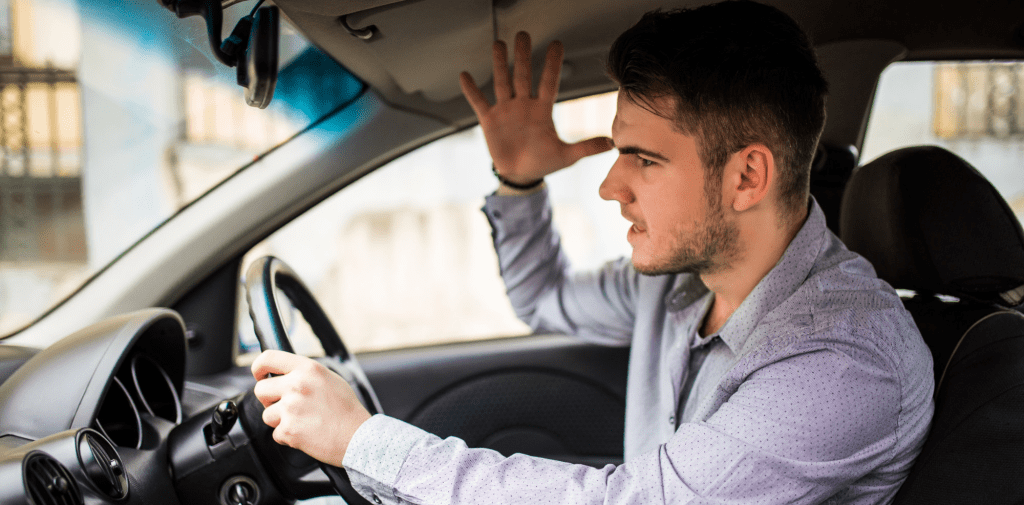

Moreover, if a driver resorts to victimising or assaulting another motorist, or causes property damage as a direct consequence of road rage, these actions are deemed offences punishable by law.
Recent research highlights that a significant 75% of drivers surveyed believe road rage should be formally recognised as an offence within UK law. This indicates a growing societal recognition of the detrimental impact road rage can have on road safety and the necessity for legal measures to address and deter such behaviour.
It is important to exercise self-control, patience, and respect while driving to avoid potentially severe legal consequences. By promoting responsible and considerate behaviour on the road, we can contribute to safer driving environments and minimise the incidence of road rage-related offences.
How much can you save on your car insurance?
How to deal with road rage
While it’s impossible to control the actions of other drivers on the road, you have the power to manage your own behaviour and maintain calmness behind the wheel. Here are some effective strategies to help you deal with road rage:
Managing Your Own Road Rage
Ensure you’re fit to drive: Fatigue can impair your driving abilities, increase irritability, and make you more susceptible to road rage. Prioritise your well-being and ensure you are well-rested before getting behind the wheel.
Enhance concentration levels: Minimise potential distractions by keeping the radio at a reasonable volume and maintaining a calm environment within the vehicle. Improved focus on the road enables you to anticipate and respond to other drivers’ actions, reducing the likelihood of road rage triggers.
Pause before reacting: In the heat of the moment, impulsive actions or words may lead to regrets later. Take a deep breath, compose yourself, and assess the situation before responding. Maintaining a level-headed approach can prevent the escalation of road rage incidents.
Let go of frustration: Recognise that all road users make mistakes, including yourself. While it’s natural to feel annoyed, holding onto frustration only exacerbates the situation. Give others the benefit of the doubt and practice letting go of anger and irritation.
Respect the new Highway Code changes: Stay updated on the latest rules and regulations, understanding their implications for your driving. Appreciating the safety concerns that prompted these changes can foster empathy towards fellow road users.
Dealing with Others’ Road Rage
Stay calm: When confronted with someone else’s aggression, make a conscious effort to remain composed. The stress and panic of a road rage encounter can lead to errors and accidents, so it’s important to stay in control. Take deep breaths and, if possible, find a safe spot to pull over and create distance between yourself and the irate driver.
Avoid reacting: Despite the temptation to respond with provocative words or gestures, refrain from engaging in a confrontation. Reacting unpredictably to someone else’s road rage can escalate the situation further, putting everyone involved at risk.
Ignore pressure: If an angry driver is tailgating you, resist the urge to succumb to their demands. Instead, allow them to pass when it is safe to do so, disregarding the pressure to increase your speed. Prioritize your safety and maintain a calm demeanour.
Acknowledge mistakes: Regardless of fault, sometimes offering an apology can diffuse tension and prevent further road rage. This gesture of acknowledgement may help placate the other driver, potentially diffusing the situation.
By adopting these road rage management techniques, you can actively contribute to a safer and more harmonious driving environment, fostering empathy, understanding, and control in challenging situations.
How much can you save on your car insurance?
Should I report aggressive drivers?
If you have experienced victimisation or assault at the hands of a driver with road rage, it is crucial to report such incidents. Additionally, if you witness someone driving aggressively, posing a risk to pedestrians or other drivers, it is equally important to report them to the police. Reporting aggressive drivers can contribute to maintaining road safety.


When making a complaint about road rage to the police, provide as much detail as possible. While it can be challenging to prosecute an aggressive driver without solid evidence, including information such as accurate descriptions, vehicle details, and the location and time of the incident can aid in the investigation process.
Ideally, if available, footage from a dashcam or CCTV, along with reliable witness statements, can significantly strengthen the case against the aggressive driver.
Reporting aggressive drivers serves several purposes. It allows authorities to be aware of potential risks on the road, helps create a record of incidents, and assists in identifying patterns of dangerous behaviour.
By reporting such incidents, you actively contribute to the overall safety of road users and potentially prevent future incidents of road rage.
Remember, your safety and the safety of others should always be prioritized. If you encounter an aggressive driver, maintain a safe distance, avoid engaging or provoking them, and focus on your own well-being.
Utilise available resources, such as dashcams or hands-free reporting apps, to capture evidence if it can be done safely and legally.
Together, by reporting aggressive drivers and promoting a culture of accountability, we can work towards a safer and more harmonious driving environment for all road users.
How much can you save on your car insurance?
What should I do if I’m involved in an accident involving an aggressive driver?
If you find yourself involved in an accident with an aggressive driver, there are several important steps to take. Prioritising your safety and ensuring the appropriate actions are taken can help you navigate the situation effectively. Here’s what you should do:
Contact the police: It is crucial to ring the police and report the accident involving an aggressive driver. Depending on the severity of the incident, they may arrest the driver for reckless driving or other relevant offences. Their presence will help document the incident and ensure appropriate actions are taken.


Gather necessary information: In order to make an insurance claim, collect the following details:
- Your personal information
- Your policy number
- Your car registration number
- A thorough description of the damage or loss incurred
- If applicable, the other driver’s information
Crime reference number (if applicable): If you have reported your car as stolen or involved in criminal activities, you may need to provide a crime reference number alongside the other information.
Document the incident: If it is safe to do so and your vehicle is stationary, make a note of the other driver’s car model, colour, and registration plate number. If the driver fled the scene or is uninsured, record as much detail as possible to aid in the investigation.
Gather evidence: Road rage accidents can be challenging to prove. Collect as much evidence as possible to support your case. If there were witnesses to the incident, ask if they would be willing to provide statements. Additionally, if you have a dashboard camera (dashcam), review the footage and submit it as supporting evidence. If there are nearby closed-circuit television (CCTV) cameras, take note of their locations as they might have captured the incident.

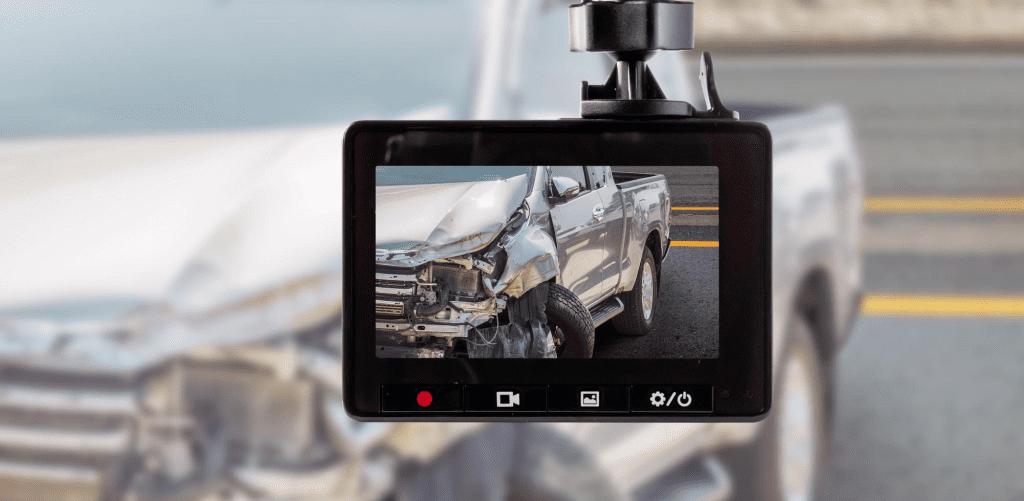
Contact your insurance provider: Get in touch with your insurance company as soon as possible. They will guide you through the claim process, inform you about your cover, and provide the necessary instructions for filing your claim.
By following these steps, you can ensure that the appropriate authorities are notified, gather vital information and evidence, and initiate the insurance claim process smoothly.
Remember to prioritise your safety and well-being throughout the ordeal, and rely on professional guidance from law enforcement and your insurance provider.
How much can you save on your car insurance?
What are my rights if my road rage caused an incident?
If you are responsible for causing an accident due to road rage, it is important to be aware of your rights and the potential consequences. Here’s what you should know:
Third-party claims: Your insurer is obliged to pay any third-party property or injury claims that arise from the accident. This means that if you have caused damage to someone else’s property or caused them injury due to your road rage, your insurer will typically handle their claims.
Damage to your own car: However, if the accident was deemed deliberate and it can be unequivocally proven, your insurer may not cover the damage to your own vehicle. Deliberate acts of road rage are generally not covered by insurance policies.
Impact on insurance: Details of the claims made in relation to the incident will be stored on the Motor Insurance Database. Additionally, if you receive penalty points as a result of the incident, they will be recorded on your driving licence. These factors can result in higher insurance premiums in the future.
It is important to recognise that road rage incidents caused by your own actions can have long-lasting consequences. The incident details being recorded and potential penalty points can lead to increased insurance costs.
Moreover, repeated road rage incidents may have a negative impact on your driving record, making it more challenging to get affordable insurance cover.
To protect your rights and mitigate potential repercussions, it is crucial to practice self-control, exercise patience, and prioritise the safety of yourself and others on the road.
By fostering responsible driving habits and actively working to manage road rage tendencies, you can help create a safer and more harmonious driving environment while safeguarding your insurance rights.
How much can you save on your car insurance?
Road rage and the new Highway Code changes
Significant changes to the Highway Code were introduced in January 2022, with the aim of improving road safety for all users. These changes have garnered both support and criticism, particularly regarding interactions between drivers and vulnerable road users. Here’s what you need to know:
Hierarchy of road users: The updated code establishes a hierarchy, placing greater emphasis on the safety of vulnerable road users. Pedestrians, cyclists, and horse riders, who face the highest risks in collisions, now hold top priority. In contrast, drivers of vehicles with greater potential for causing harm, such as lorries, passenger vehicles, vans, minibuses, cars, and motorbikes, bear increased responsibility.
Right of way for vulnerable road users: Drivers are now obligated to give way to vulnerable road users in situations where they previously had the right of way. For example, drivers must yield to pedestrians at junctions, ensuring their safety.
The Dutch Reach: Drivers are advised to use the hand furthest from the door when opening their vehicle door. This practice, known as the Dutch Reach, aims to reduce the risk of a cyclist colliding with an open door.


Positioning of cyclists: Cyclists are encouraged to cycle in the middle of a lane whenever feasible. Drivers are urged to provide cyclists with sufficient space when overtaking. At junctions, cyclists travelling straight ahead have priority over drivers waiting to turn into or out of side roads.
While these changes are intended to enhance overall road safety, they have not been without critics. Supporters argue that they improve safety for vulnerable road users and promote greater responsibility among car and lorry drivers, reducing potential hazards.
However, detractors raise concerns about the general awareness and understanding of the new rules. This lack of clarity may lead to confusion among road users, potentially resulting in road rage incidents and, in severe cases, accidents.
To ensure safer road interactions, it is essential for all drivers to stay informed about the updated Highway Code provisions and adapt their driving behaviours accordingly.
By promoting understanding and compliance, we can strive for a safer and more harmonious coexistence on the roads while minimising the risk of road rage incidents and accidents.




